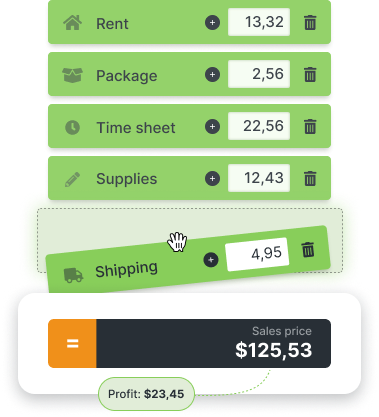Goals:
To create a new digital product for a company which operates in the educational industry teaching handcrafters to develop their skills.
My role:
- Identify a new product opportunity based on users' problems;
- Validate the product idea;
- Conduct research with users (Survey);
- Define product requirements;
- Benchmark analysis;
- Define user flow;
- Create UI;
- Define personas;
- Perform tests.
Tools used:
- Illustrator;
- Google Forms;
- Google Analytics;
- Keyword planning tools.
Research and Data Analysis
I faced two challenges in this project: the first was to solve a problem handcrafters have. The second was launching a primary functional version (MVP) of Windows software within three months to evaluate how well the target audience would react.
However, before any wireframing, a digital product concept based on a real problem had to be identified. Several types of research were made during the discovery phase to understand users’ pains, wishes, and needs. The following methods were applied to address that topic:
- Questionnaires for users who signed up for the newsletter and existing customers;
- Research via forums and social media;
- Blog content evaluation (based on popularity and engagement).
From this analysis, I noticed that the most prominent problem was the difficulty of attributing an ideal price to handcrafted products. Why were people having problems with pricing?
To understand that, more research was made to discover how people were calculating their prices and what solutions were already available in the market to address this issue.
An interesting fact I discovered during research with users was that some people guessed a sales price. Meanwhile, others would base their price on competitors’ average prices. So, they did not truly know if they were making profit or losses. Few sellers precisely calculated all the costs involved in the production of an artefact.
I also evaluated the market volume and how these products could expand their presence in new markets beyond handcrafting e.g., freelancing, small industries etc.
Those researches were synthesized using:
- Affinity diagrams;
- Personas;
- Business canvas;
- Value proposition canvas;
- Red routes;
- User stories.
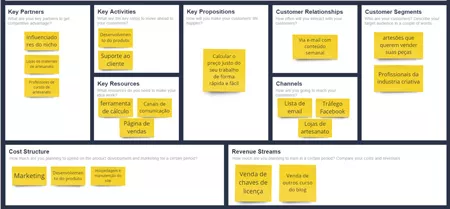
To better understand the product during this discovery phase, this is how the company's first tweet would be:
“Find out how to calculate a fair price for your handcrafts in a fast, easy, and confident way.”
Ideas generation and prototypes
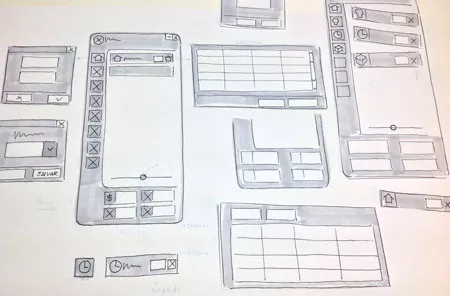
Several sketches and task flows were created after analyzing the research data. Among these, which included apps and even pricing courses, the one that better addressed the requirements can be viewed in the image below:
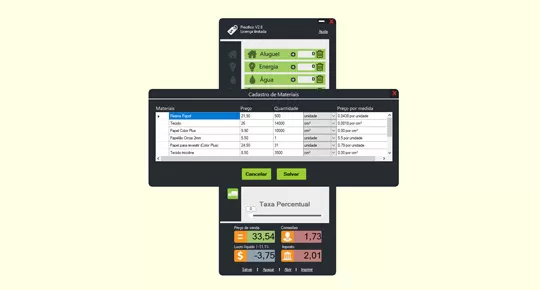
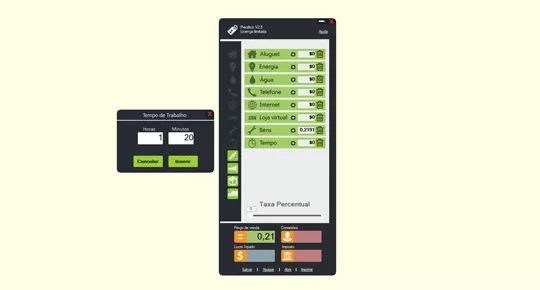
Our main concern was to create a simple product from a visual and UX perspective, so users who are not tech-savvy would not reject the product, in the first contact. My studies led me to a software concept that would enable users to add all their pricing elements in a list format. So, it resembles the traditional way some evaluated people use when calculating sales prices, using a notebook.
In addition, it has a material database where users can add their supplies, their costs, and the amount used in a specific artefact. Therefore, they could know exactly how much each artefact costs based on the supplies, expenditures, hour rate etc. The software supports them in calculating the optimal sale price, taking also into consideration the profit margin.
The main features are:
- The users can create a database of all elements that influence the price. So that they no longer need to memorize or keep a notebook with information related to supply costs;
- Most users had a hard time calculating the price of the “pieces” used to make a handcraft. Thus, I proposed a conversion system where users could inform how much craft materials they had utilized, such as glue, fabric, thread, flour, etc. Based on the inserted values, the program calculates the exact price of each piece used to construct the final product;
- All costs that are part of the purchase price can be visualized on the same screen. So, the users can identify which elements are costing them the most and then, they can adjust their prices accordingly to be more competitive.
Product testing
The first version of the product was implemented by developers to quickly validate the product in the market using the company's followers and customer list.
Following the validation, I performed numerous improvements, additional new features and code fixes based on users' feedback.
Results
The research revealed that one of the biggest problems faced by the users was the price calculation of handcrafted products. This discovery allowed me to develop and launch the first version of Windows software capable of calculating every cost precisely, as well as the sales price and the profit.
